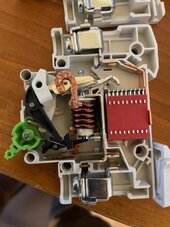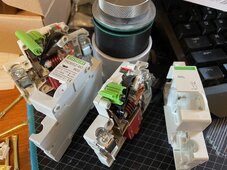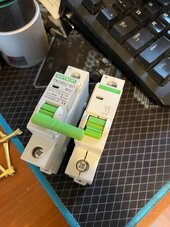Hi all, I'm looking at the Taixi TXCM1B series breakers and the folks at AliExpress tells me it's non-polarized. I know some on this forum are not AliExpress fans and that's ok, but can I get an objective opinion on the Taixi TXCM1B series of breakers? I'm looking to use this breaker as my main DC disconnect for my battery bank. So this will isolate my battery bank from my inverters (2x EG4 6500EX 48V). I will be using BlueSea T class fuses as well for the battery bank (2x 2P16S Lifepo4) but want the additional functionality of being able to isolate the batteries from the inverters, and if I can have the isolation switch also provide over current protection, then that's ideal.
I also saw these Taixi breakers listed on Andy's site where he says it's quite good as a main battery disconnect. Perhaps I may be confused but my understanding is that for battery breakers, they should be non-polarized so they offer protection for both charging and discharging. The Taixi TXCM1B breakers have + and - symbols and also shows how which terminals the load should be connected to. Despite that, AliExpress is saying that they are non-polarized so I am reaching out to this forum to confirm based on the markings on the breaker, are they indeed non-polarized?
So I'm hoping that more knowledgeable persons than me on this forum can clear up this matter for me. Is this breaker non-polarized and will it protect for over current for both charging and discharging? I have the 600A double pole version. I've also attached the documentation which the folks at the Taixi store from aliexpress sent but I'm not seeing anything that says if its polarized or non-polarized. A note on the Taixi store folks....they're very responsive but I just want to make sure what I am being told is accurate before I place this critical breaker on my system. Ideally I would've loved to use the NoArk breakers that Andy uses but the store in Australia seems to not ship internationally.
Another question...is directional/non-directional, the same as polarized/non-polarized? Does directional mean polarized and non-directional mean non-polarized?
Thanks as always to folks on this forum for your guidance.
I also saw these Taixi breakers listed on Andy's site where he says it's quite good as a main battery disconnect. Perhaps I may be confused but my understanding is that for battery breakers, they should be non-polarized so they offer protection for both charging and discharging. The Taixi TXCM1B breakers have + and - symbols and also shows how which terminals the load should be connected to. Despite that, AliExpress is saying that they are non-polarized so I am reaching out to this forum to confirm based on the markings on the breaker, are they indeed non-polarized?
So I'm hoping that more knowledgeable persons than me on this forum can clear up this matter for me. Is this breaker non-polarized and will it protect for over current for both charging and discharging? I have the 600A double pole version. I've also attached the documentation which the folks at the Taixi store from aliexpress sent but I'm not seeing anything that says if its polarized or non-polarized. A note on the Taixi store folks....they're very responsive but I just want to make sure what I am being told is accurate before I place this critical breaker on my system. Ideally I would've loved to use the NoArk breakers that Andy uses but the store in Australia seems to not ship internationally.
Another question...is directional/non-directional, the same as polarized/non-polarized? Does directional mean polarized and non-directional mean non-polarized?
Thanks as always to folks on this forum for your guidance.








